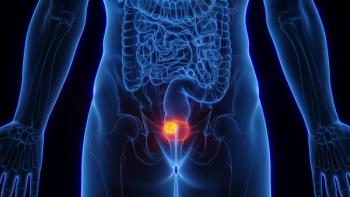
Patients With Systemic Sclerosis Face Decreased HDL-C, Increased Lipoprotein(a)
Key Takeaways
- Systemic sclerosis patients exhibit lower HDL-C and higher triglyceride and Lp(a) levels, increasing cardiovascular disease risk.
- A systematic review and meta-analysis confirmed significant lipid profile alterations in SSc patients compared to healthy controls.
A systematic review and meta-analysis revealed key insights into lipid parameters in patients with systemic sclerosis.
Patients with systemic sclerosis (SSc), an autoimmune condition characterized by progressive internal organ and skin fibrosis, present with significantly lower high-density lipoprotein cholesterol (HDL-C) levels and meaningfully higher triglyceride and lipoprotein(a) [Lp(a)] levels compared with healthy controls (HCs), according to new data published by researchers in Rheumatology International.1
Systemic Sclerosis and the Pharmacist's Role
SSc carries one of the highest mortality rates among rheumatic diseases, with especially high rates for males and patients 50 years or younger. Although most patients with SSc experience skin-related complications—including the tightening or hardening of the skin—digestive, heart, and lung-related symptoms can also occur as the condition develops. Concerningly, researchers have observed an increasing prevalence of SSc, necessitating new approaches to determining risk and novel management strategies.2-4
With any disease state, illness, or patient complication, pharmacists represent an accessible, trustworthy option for health care counseling. Beyond their expertise in prescribing, dosing, and knowledge of drug-drug interactions, pharmacists can comprehensively monitor and assess patients for any changes in their appearance or daily functioning that could be indicative of SSc or other rheumatic diseases. Accordingly, they can order tests and assist with analyzing patient metabolic factors to diagnose the problem. In SSc particularly, greater research is needed to determine which innate factors drive the disease’s mechanism of action, which could improve the detection and possible treatment.
Unfortunately, such factors remain undetermined. Some research has been conducted on the topic—including from Au et al, who observed dysfunctional HDL and oxidized low-density lipoprotein (LDL) in patients with SSc that could promote atherosclerosis—but most investigations on lipid alterations in these patients are inconsistent, with multiple pathways of lipid alterations being found. The current study authors conducted a systematic review and meta-analysis to analyze SSc-related variations in lipid profile parameters in this patient population.1,5,6
Review Reveals Potent Lipid Considerations in SSc
Following a stringent study selection process, 27 articles were included in the review—22 were case-control studies, while 5 were cross-sectional in design. There were 2503 participants included in the trial, featuring 1114 patients with SSc and 1389 HCs. Twenty-four studies reported total cholesterol and triglyceride levels, and HDL-C levels were also analyzed in 24 articles. Lp(a) levels were only investigated in 4 studies, the authors found.1
A pooled analysis from the 24 studies including HDL-C found that SSc patients had significantly lower HDL-C levels compared with the HC group (mean difference [MD]: –5.61 mg/dL [95% CI, –8.22 to –3.00]; I2 = 83%). Furthermore, there were significantly higher triglyceride levels in patients with SSc compared with HCs (MD: 16.98 mg/dL [95% CI, 8.28-5.68]; I2 = 68%). From the 3 studies investigating Lp(a), the authors observed meaningfully higher Lp(a) levels in patients with SSc compared with HCs (MD: 15.66 mg/dL [95% CI, 6.77-24.55]; I2 = 5%). Interestingly, there were no major differences reported in total cholesterol or LDL-cholesterol levels between patients with SSc and HCs.1
To verify their observations from this systematic review, the authors conducted a quality assessment of the observational studies they included using the Newcastle-Ottawa Scale (NOS). The NOS scale produced a mean score of 8 points across the 27 studies, indicating that the included studies were of high quality.1
The investigators discussed how, to the best of their knowledge, this was the first meta-analysis to examine the relationship between lipid profiles in SSc, with these results providing solid and thorough evidence to a knowledge field that has been perturbed by inconsistency. According to these findings, patients with SSc not only face an increased risk of atherosclerotic cardiovascular disease associated with dyslipidemia, but also a specifically disrupted lipid profile that could serve as the paramount indicator of inflammatory SSc.1,6,7
Pharmacists should place a special emphasis on proper cholesterol monitoring for patients with SSc. If patients were to be identified as especially high-risk for severe SSc complications based on their cardiometabolic profile, new avenues for SSc management—and perhaps treatment—could be uncovered. For now, greater pharmacist involvement in lipid profiling and more thorough assessment of lipid parameters in patients with SSc will emphasize healthy cardiovascular habits and, hopefully, improve the conditions of patients with SSc, even if only marginally.1
REFERENCES
1. Mastori-Kourmpani C, Makris A, Agouridis AP, et al. Classic lipid profile and lipoprotein(a) in systemic sclerosis: a systematic review and meta-analysis of case-control studies. Rheumatology International. 2025;45(182). doi:10.1007/s00296-025-05932-1
2. Bournia VK, Fragoulis GE, Kapsali F, et al. All-cause mortality in systemic rheumatic diseases under treatment compared with the general population, 2015-2019. RMD Open. 2021;7(3):e001694. doi:10.1136/rmdopen-2021-001694
3. Mayo Clinic Staff. Scleroderma - Symptoms and causes. Mayo Clinic. Published June 15, 2024. Accessed August 25, 2025. https://www.mayoclinic.org/diseases-conditions/scleroderma/symptoms-causes/syc-20351952
4. Bournia V, Fragoulis GE, Sfikakis P, et al. Increased prevalence of inflammatory arthritis, systemic lupus erythematosus and systemic sclerosis, during 2020–2023 versus 2016–2019 in a Nation-Wide Cohort Study. Rheumatology International. 2024;44:2837-2846. doi:10.1007/s00296-024-05733-y
5. Au K, Singh MK, Bodukam V, et al. Atherosclerosis in systemic sclerosis: A systematic review and meta-analysis. Arthritis & Rheumatism. 2011;63(7):2078-2090. doi:10.1002/art.30380
6. Gogulska Z, Smolenska Z, Turyn J, Mika A, Zdrojewski Z. Lipid alterations in systemic sclerosis. Front Mol Biosci. 2021;8:761721. doi:10.3389/fmolb.2021.761721
7. Heilmeier U, Feldmann D, Leynes A, et al. Chronic low-grade inflammation in patients with systemic sclerosis is associated with increased risk for arteriosclerotic cardiovascular disease. Front Med. 2024;11:1446268. doi:10.3389/fmed.2024.1446268
Newsletter
Stay informed on drug updates, treatment guidelines, and pharmacy practice trends—subscribe to Pharmacy Times for weekly clinical insights.
























































































































































































































